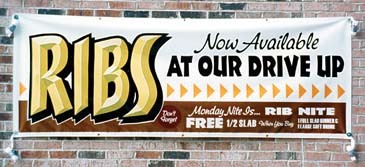Business Management
Regulatory Currents
A few communities respect signs’ importance, but sign-code crackdowns are prevalent.
Published
18 years agoon

Just as they’ve done for the past 100 years, local governments struggle to balance community aesthetics and the crucial need for business advertising. Sign professionals may perceive municipal officials as intractable foes, but what city politician can afford to alienate local business leaders, on whose behalf sign companies work? Signmakers and their business clients can deploy some potent weapons against unreasonable sign codes.
I found a few newspaper editorials that commented on proposed sign codes and related legal disputes.
In general, these editorials criticize municipal authorities’ broad sign-code interpretations and, especially, their “special exceptions” based on circumstances. I appreciate the importance of legal consistency, but these journalists are missing a key point. Local governments must maintain their interpretive latitude to define physical conditions within their communities.
A municipal zoning board strongly resembles a jury — they both comprise individuals with diverse perspectives and local interests. These people must hear appeals and evaluate their merits against local sign-code requirements. Just as a jury has the authority to determine a person’s innocence or guilt, a local zoning board collectively authorizes a particular sign’s acceptability.
Tying local officials’ hands, as these editorials suggest, would do more than damage business prospects for sign professionals and their customers. It would neutralize local communities’ authority to freely determine their own aesthetic standards and adapt written laws in light of changed circumstances. In this regard, many American cities and towns are already experiencing the backlash produced by excessively strict sign codes.
Temporary signs
AdvertisementThe most conspicuous regulation trend today involves local communities’ efforts to control temporary signs. Many communities have strengthened enforcement of temporary-sign regulations, while others have approved stricter rules. Business owners who ignore these rules face increasingly stiff fines.
This trend particularly concerns vinyl-signshop operators, who sell banners and other temporary signs. Because many municipalities now require permits for temporary signs, your customer may, for example, receive a $500 fine for posting a $300 banner.
To demonstrate professionalism, vinyl-shop operators should advise customers that permits might be necessary for temporary signs. Conversely, a “buyer beware” policy regarding temporary-sign sales can hurt your reputation. The customer would prefer to know specific information about local community requirements.
Raleigh, NC, provides a sobering example of cities’ current crusades against unauthorized, temporary signs. The city recently began to enforce a temporary-sign ordinance that wasn’t strictly enforced for 18 years. City inspectors photograph unapproved, temporary signs and then send citations to the violators, with photos of the illegal signs. Penalties for violations start at $200 (a $100 civil fine plus a $100 administrative fee). Initial notification is followed by an additional $500 fine each day that the sign remains.
Other communities are currently assessing similarly tough penalties. Cities usually exempt real-estate signs and political signs (during campaigns), but temporary, commercial signage is fair game.
Goodbye, Grandpa
AdvertisementBrandon, FL, a bustling east Tampa suburb, illustrates the ramifications of overzealous regulation. Hillsborough County, where Brandon is located, recently passed a new code incorporating a height ordinance that only permits low-profile, monument signs. County code-enforcement officers have already issued more than 400 citations to local businesses that haven’t removed existing, nonconforming signs.
However, several Tampa-area sign companies have lobbied county commissioners to increase the code’s height limit for freestanding signs to a modest 15 ft. The new code also reduces the maximum business-sign size to 50 sq. ft. Local merchants have complained that the new sign code limits conspicuity — such small signs are virtually invisible to passing motor-ists. Some believe the Hillsborough County code might be modeled after the restrictive codes governing some of Florida’s exclusive, beachfront communities. But in such a busy, commercial suburb as Brandon, this new code penalizes local businesses.
In this regard, sign professionals have recognized an ominous trend in sign regulation. In the past, existing signs enjoyed almost universal protection by “grandfathering” language in local sign codes. But today, many communities’ amortization schemes require removal of nonconforming signs after a specific time period. $image2
Even worse, some municipalities don’t compensate businesses’ sign-replacement costs. However, Flint, MI, offers a more reasonable approach. Three years ago, the municipality of Flint Township revised its sign ordinance to impose a maximum 10-ft. height limit. But the township ultimately determined that forcing businesses to remove their existing signs is a bad idea. Instead, the township is now considering a voluntary program designed to encourage code compliance. Under this proposal, a public fund for infrastructure improvements could provide grants to local business owners who comply with the revised code.
In 2001, the town of Erwin, NY, revised its sign code, which banned rooftop signs and substantially reduced the height allowance for freestanding signs. After a compliance period that has been extended for three years, the municipal authority is now advising local businesses they must comply. This illustrates why sign professionals often complain that local officials are out of touch regarding advertising needs.
According to the Elmira Star-Gazette, town manager Rita McCarthy was asked about complaints from local merchants. She said, “We did not do this to create problems for business owners; we did this to enhance the community, to enhance the business climate and to enhance the opportunities for businesses, residents and tourists.”
AdvertisementBut Erwin retailers don’t share McCarthy’s view of “enhancement.” The Star-Gazette reports that a local shopping-center owner is concerned because some of her long-term tenants have threatened to move elsewhere as a result of the new sign code. For example, Rick Davis owns a local dry-cleaning shop with a non-conforming, roof sign that has identified his store for 20 years. “As far as I’m concerned, they’re sending a signal to me and every other businessperson in the town of Erwin that they don’t want us there,” Davis said.
Good intentions/bad results
Historically, communities that enact tough sign codes ultimately have been forced by circumstances to bend their rules. Some communities even use tough sign codes as tools to raise more money from fees for permits and related zoning appeals. As an installation contractor, I dealt with a certain municipality whose code restricted freestanding signs to a 50-sq.-ft. maximum size. But if the applicant was willing to pay a $2 premium for each additional square foot, the code allowed freestanding signs as large as 200 sq. ft. In many cases, restrictive sign codes encourage the special exceptions they should eliminate.
Draconian sign codes also make the inevitable special exceptions more conspicuous. A business associate once told me that a world-famous golfer had intervened on behalf of a major corporation to convince state authorities to redirect an existing highway, thus allowing construction of a new manufacturing plant. Apparently, a round of golf with the champ convinced the official in charge. In the same vein, merchants frequently want local authorities to explain why a city’s major employer is often permitted to have the largest and most conspicuous signs in town. Excessive variations between normal and special-exception signs can be embarrassing and difficult for governing authorities to explain.
Faced with local businesses’ threats to leave town, local officials must temper their enthusiasm when enforcing new sign codes. That’s precisely why the current trend towards limiting local, discretionary authority represents a long-term threat to the sign industry. If every city enacted identical regulations based on a “model sign code,” what incentive would remain for communities to accommodate advertising needs based on established visibility standards? And what, then, would prevent town officials from presuming to “enhance” local businesses via forced removal of their signs?

SPONSORED VIDEO
Introducing the Sign Industry Podcast
The Sign Industry Podcast is a platform for every sign person out there — from the old-timers who bent neon and hand-lettered boats to those venturing into new technologies — we want to get their stories out for everyone to hear. Come join us and listen to stories, learn tricks or techniques, and get insights of what’s to come. We are the world’s second oldest profession. The folks who started the world’s oldest profession needed a sign.
You may like

ISA Announces New Tradeshows and Meetings VP

5 Reasons to Sell a Sign Company Plus 6 Options

Sign Products Wrap-Up for April
Subscribe

Bulletins
Get the most important news and business ideas from Signs of the Times magazine's news bulletin.
Most Popular
-

 Tip Sheet1 week ago
Tip Sheet1 week agoAlways Brand Yourself and Wear Fewer Hats — Two of April’s Sign Tips
-

 Ask Signs of the Times2 days ago
Ask Signs of the Times2 days agoWhy Are Signs from Canva so Overloaded and Similar?
-

 Real Deal1 week ago
Real Deal1 week agoA Woman Sign Company Owner Confronts a Sexist Wholesaler
-

 Benchmarks5 days ago
Benchmarks5 days ago6 Sports Venue Signs Deserving a Standing Ovation
-

 Editor's Note2 weeks ago
Editor's Note2 weeks agoWhy We Still Need the Women in Signs Award
-

 Women in Signs1 week ago
Women in Signs1 week ago2024 Women in Signs: Megan Bradley
-

 Photo Gallery7 days ago
Photo Gallery7 days ago21 Larry Albright Plasma Globes, Crackle Tubes and More
-

 Product Buying + Technology2 weeks ago
Product Buying + Technology2 weeks agoADA Signs and More Uses for Engraving Machines














